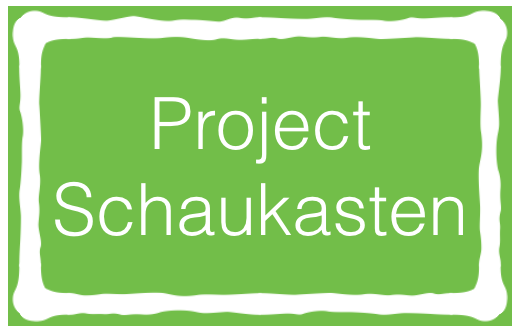Below you will find pages that utilize the taxonomy term “Prevention”
Designing for resilience with unaccompanied migrant youth
Unaccompanied migrant youth (UMY) must cope with adversities before, during, and after their flight to Austria without adult relatives. Mental health support could contribute to promoting resilience in UMY and help them to cope with their adverse situation; however, despite increasing evidence that technology could make mental health support more accessible, there is a lack of knowledge regarding how to design technology-enabled resilience support for this vulnerable and marginalized population. This project explores how to potentially support resilience promotion in UMY with the help of technology. I use qualitative and design methods to (1) gain a deep understanding of the context of UMY in Vienna, Austria; (2) identify pathways to integrate technology-enabled resilience support; and (3) explore possibilities to design technology-enabled support for this space. The findings highlight a complex interplay among social-ecological factors in supporting and hindering resilience promotion that cannot be ignored when designing technology-enabled resilience support for this context. Otherwise, the technological solutions could not be as supportive as possible and even fail to provide support. Thus, the outcome of this project proposes and exemplifies a shift from an individual to a social-ecological approach to researching and designing technology-enabled resilience support. The first outcome of this project is a descriptive account mapping the social-ecological factors such as macro-systemic factors (e.g., legal policies) and micro-systemic factors (e.g., social and physical factors in the everyday living situation) that support and hinder resilience. The second outcome of this project is a map of potential pathways and possibilities for technology-enabled resilience support in this context, which is presented as part of a design framework. This design framework focuses on two main pathways to integrate technology-enabled support for UMY in this context: through direct technology-enabled support for UMY and by supporting resilience in UMY through their mentors. The thrid contribution of this project is an understanding of how to apply the design framework to the research and design of technology-enabled support for this and other contexts, such as low- and middle-income countries. The framework could help researchers to develop technological solutions that are capable of integration into the social-ecological interplay and relations. The design examples resulting from this project instantiate some possibilities of technology-enabled resilience support for UMY and could be further developed and evaluated in future studies.
Developing an inclusive technological toolkit to support prevention approaches
Within this project, a technological toolkit is being developed, which will allow young people, mediated by caregivers, to create customizable applications to support their own mental health and wellbeing, based on evidence-based interventions.
The necessity for this project emerges out of two intertwined problems. First, the homogenous nature of existing approaches to promote youth mental health (YMH), as they are often text-based, even as they are progressively being translated into the digital sphere. Yet the group “adolescents”, which is, within this project, defined as youth roughly between the age of 14 and 25, can’t be considered homogenous by any sensible metric. An intervention which is highly engaging for one might be of no interest, or not even accessible, for another (Castro, Barrera, & Martinez, 2004). For example, the existing emphasis on text-based measures to promote mental health does exclude migrant youth who do not yet have access to the language in which those measures are presented. While an increasingly broad landscape of more heterogeneous YMH interventions is currently opening up, those interventions are usually not customizable, which results in the same exclusion effects, and in resting the burden of identifying a suitable intervention on the ability and willingness of adolescents to comb through all available options, until they find one that works for them. On top of that, for YMH interventions to be used in the first place, they have to be engaging, which Hagen, Collin, Metcalf, Rahilly, & Swainston (2012) point out as one of the key challenges when developing technological YMH interventions. Second, the aforementioned lack of available customization presents a lost opportunity to address hedonic adaptation (Kahneman, Diener, & Schwarz, 1999). Engagement decreases over time, as applications lose their novelty. This loss of engagement does not, however, coincide necessarily with decrease in usefulness or effectiveness. People may lose interest over time, even if continued use of an application would still be beneficial. Allowing for customization, for changing features of an application, allowing adding and removing of features, should decrease the effects of hedonic adaption, or at least delay them, and thus extend the period of active use of an application, which in turn likely increases the overall effect an YMH application can have on its user.
SCHAUKASTEN - Sehförderung für Kleinkinder

SCHAUKASTEN - Sehförderung für Kleinkinder (1.12.2016 - 31.1.2018), financed by: Hauptverband der österreichischen Sozialversicherungsträger
SCHAUKASTEN seeks to conceptualize, co-design and implement novel interactive toys that motivate young children with visual impairments to keep up with their often dull but crucially important optical exerices.
Children with distinct visual impairment shall exercise their vision as soon as possible in order not to go blind. This exercise in vision constitutes an important building block for later leading an autonomous life.
TEAM - Technology Enabled Mental Health for Young People

TEAM (Technology Enabled Mental Health for Young People), is a 4-year Innovation Training Network (ITN), funded by the European Union’s Horizon 2020 programme under the Marie Skłodowska-Curie actions initiative. There has been considerable research and many commercial products for improving physical health. However, the use of technology to support mental health lags far behind. The aim of the training network is to deliver new applications and technologies that support rapid, large-scale early assessment, prevention and treatment of mental health issues in young people.